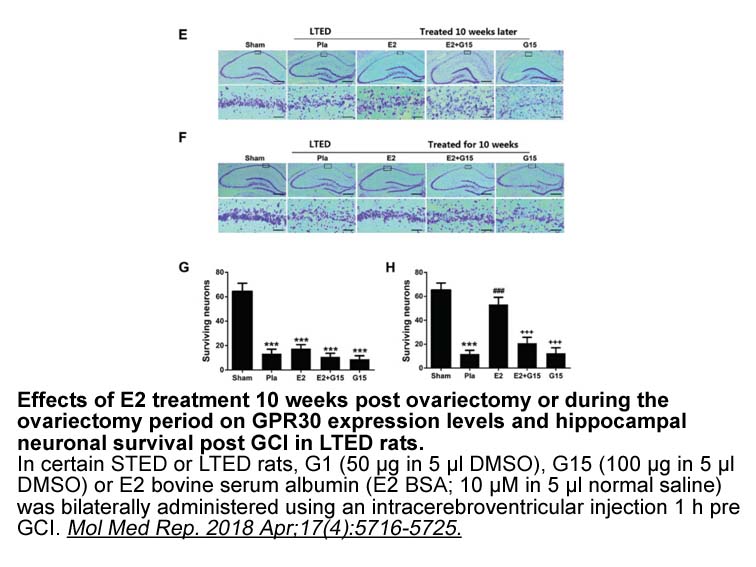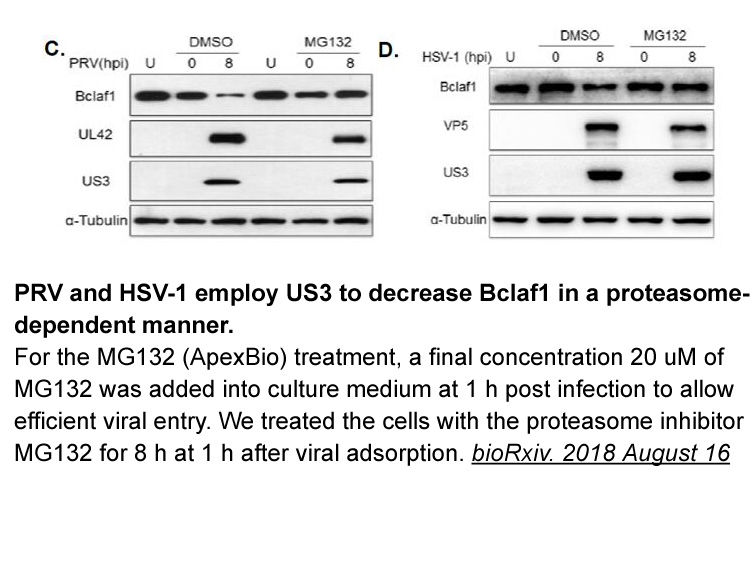Archives
- 2025-12
- 2025-11
- 2025-10
- 2025-09
- 2025-03
- 2025-02
- 2025-01
- 2024-12
- 2024-11
- 2024-10
- 2024-09
- 2024-08
- 2024-07
- 2024-06
- 2024-05
- 2024-04
- 2024-03
- 2024-02
- 2024-01
- 2023-12
- 2023-11
- 2023-10
- 2023-09
- 2023-08
- 2023-07
- 2023-06
- 2023-05
- 2023-04
- 2023-03
- 2023-02
- 2023-01
- 2022-12
- 2022-11
- 2022-10
- 2022-09
- 2022-08
- 2022-07
- 2022-06
- 2022-05
- 2022-04
- 2022-03
- 2022-02
- 2022-01
- 2021-12
- 2021-11
- 2021-10
- 2021-09
- 2021-08
- 2021-07
- 2021-06
- 2021-05
- 2021-04
- 2021-03
- 2021-02
- 2021-01
- 2020-12
- 2020-11
- 2020-10
- 2020-09
- 2020-08
- 2020-07
- 2020-06
- 2020-05
- 2020-04
- 2020-03
- 2020-02
- 2020-01
- 2019-12
- 2019-11
- 2019-10
- 2019-09
- 2019-08
- 2018-07
-
We have previously reported that CK is downregulated in sene
2019-11-22

We have previously reported that CK2 is downregulated in senescent human lung fibroblast IMR-90 cells, aged rat tissues, and aging nematodes [17,18]. CK2 downregulation induces cellular senescence via the PI3K-AKT-mTOR-reactive oxygen species-p53-p21Cip1/WAF1 pathway in human cells [[19], [20], [21]
-
In rodents Wang et al Wang and
2019-11-22

In rodents (Wang et al., 2003, Wang and Tsirka, 2005b, Zhu et al., 2012) and humans (Wang et al., 2011), the major forms of cell death after ICH are necrosis and apoptosis. In the perihematomal region of rodents, the number of necrotic and apoptotic cells peaks at 72h post-ICH (Matsushita et al., 20
-
The main variable of the study was whether there was
2019-11-21

The main variable of the study was whether there was an association between the COMT Val158Met polymorphism and motor behavior. Additionally, it was investigated whether the effects of the COMT genotypes on the role played by tonic/phasic DA are associated with the stability/flexibility nature of th
-
Expression of EBI and its function
2019-11-21

Expression of EBI2 and its function for migration in vitro in T cells was recently reported (Chalmin et al., 2015, Hannedouche et al., 2011, Liu et al., 2011, Pereira et al., 2009). Pereira et al. (2009) used an EBI2 reporter mouse and found that most CD4+ T cells, but only approximately half of the
-
These studies suggested that PV
2019-11-21

These studies suggested that PV/PVH might promote bone formation activities and/or inhibit bone resorption activities probably due to its anti-inflammation activity; however, the underlying mechanism remained unknown. Furthermore, it is unclear if PVH shows better activity than that of PV; this is i
-
In the past few years neuroprotection via
2019-11-21

In the past few years, neuroprotection via GLP-1R activation has been shown in several animal models of stroke, Alzheimer\'s, Parkinson\'s, Huntington\'s, ALS and traumatic endomorphin injury. This research field is rapidly growing and several reviews have been recently published (Darsalia et al., 2
-
br Materials and methods br Results br Discussion Plg
2019-11-21

Materials and methods Results Discussion Plg plays important roles in various physiological processes, such as fibrinolysis, proteolysis, cell migration, differentiation, tissue remodeling, and inflammation [6], [7], [8]. We herein found that Plg deficiency enhanced insulin secretion, and w
-
Preparation of the regioisomeric pyridooxazepinones
2019-11-21

Preparation of the regioisomeric pyridooxazepinones 10 and 11 was accomplished utilizing the synthetic sequence depicted in Scheme 3. Amide coupling of 63 and serine protease inhibitors chloride 64 afforded amide 65. Removal of the alcohol protecting group, followed by base catalyzed cyclization af
-
In agreement with the study on porcine microsomes Ekstrand
2019-11-21

In agreement with the study on porcine microsomes (Ekstrand et al., 2015), our results indicated a somewhat higher degree of inhibition of CYP2E1 activity in the male pools compared to females. Nevertheless, the degree of this CVT-313 inhibition did not reach 50%, indicating that quercetin is unlik
-
p Kip is a critical component of the
2019-11-21

p27Kip1 is a critical component of the cell cycle machinery [15]. As an inhibitor of cyclin E-Cdk2, p27Kip1 plays a pivotal role in controlling cell proliferation, S-phase entry, and G1-phase exit during development and tumorigenesis [16]. p27Kip1 is predominantly regulated via posttranslational mod
-
LFM-A13 synthesis Stress is usually comprehended as an event
2019-11-21

Stress is usually comprehended as an event affecting mainly the HPA axis and initiating the alarm reaction represented by activation of the adrenal medulla. This means that the levels of related hormones and neurotransmitters are significantly elevated during and after the stress. CRF, following its
-
The interaction of EPAC with Rim has an
2019-11-20

The interaction of EPAC2 with Rim1 has an important role in regulating neurotransmitter release. In addition, a recent EPAC2 knockout mice model study provides evidence that EPAC2 promotes transmitter release by maintaining the readily releasable pool (RRP) at mossy fiber (MF) synapses in the hippo
-
Since the dideoxy analogues and served as
2019-11-20

Since the 1,2-dideoxy analogues, and , served as substrates for TgTCEA and TgTCEB, respectively, with the higher affinity (lower ) and lower turnover number (lower ) than their authentic substrates, PosA and PosB (such trend was more evident on analogue for TgTCEB than on analog for TgTCEA), an i
-
br Material and methods br Results br Discussion The results
2019-11-20

Material and methods Results Discussion The results show for the first time that DDRs may be involved in the pathogenic mechanisms of neurodegenerative diseases. We found that DDR1 and DDR2 levels are up-regulated in post-mortem AD and PD brains, suggesting that these receptors play a role
-
Consistent with the known tolerance of the Suzuki Miyaura
2019-11-20

Consistent with the known tolerance of the Suzuki–Miyaura reaction to a wide range of aryl substituents, we subsequently found that the commercially available 3-hydroxyphenylboronic NAD+ pinacol ester () could be coupled to , to give directly and in comparable yield. Smooth conversion of into wa
14421 records 922/962 page Previous Next First page 上5页 921922923924925 下5页 Last page